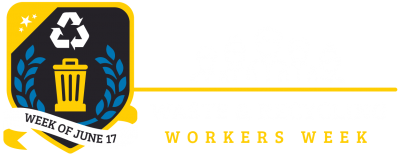
One man’s trash is another man’s… museum show?
Through April 29, the City Reliquary, in Williamsburg, is hosting an exhibit that serves as a history of New York City’s waste management (orlack thereof) as well as a show of works by artists and nonprofits whose medium is garbage. Also featured are some of the unusual items Nelson Molina collectedduring his 30 years with the NYC Department of Sanitation.
“It really started from Robin Nagle, from her book Picking Up,” said Bill Scanga, the exhibit’s curator. “I saw her lecture and decided there was an exhibition in this.”
Nagle is the Anthropologist-in-Residence at the Department of Sanitation, and Picking Up details the lives and work of employeesthere.

The Treasures in the Trash Museum.
Molina has been going through the trash since his childhood, digging out discarded toys to populate his family Christmas tree. He joined the Department of Sanitation in 1981 and started his “Treasures in the Trash“museum in his locker in a garage on East 99th Street. The collection expanded, and has now taken over an entire floor of the Harlem garage, which is no longer structurally sound enough to serve the large sanitation trucks. Molina’s collection serves as an anthropological snapshot of the city, with signed portraits of lovers, paintings, musical instruments, and much more.

Nelson Molina
In addition to telling the stories of the city’s refuse, “NYC Trash!” features a grab bag of nonprofits with contemporary solutions to New York City’s waste problem. For instance, as local micro-brewers dispose barley used to create beer, RISE reclaims the material to make into flour, which can be used in other products. Check out the results of Trash:Hack:NYC, a hackathon where experts from the waste, environmental law, policy, logistics and design sectors competed to create ideas for efficient waste management.

Larry Racioppo photo
Also featured here aresome of the photos thatLarry Racioppohas collected of scrap yards, their operators, and some of the hundreds of people who collect scrap metalaround town. These workers keep alive the city’s centuries–long tradition of making money off the city’s steady stream of refuse.

Photo of Trash Worker on Barren Island
Historical documents on display at City Reliquary illustrate the city’s battle to deal with an ever-expanding wasteload. For most of the city’s early history, waste management was an ad-hoc affair, mostly performed by tradesmen dealing with a deluge of human and animal feces, among other things. Even when Peter Stuyvesant, the final director general of the New Amsterdam colony, issued orders to collect “oyster shells, dead animals, etc.,” they were flatly ignored.The city didn’t tackle trash directly until late 1881, when the Department of Street Cleaning was founded.

The exhibit features some of Robert Moses’ legacies, including the trash at Dead Horse Bay.
Robert Moses’s legacies, including the trash at Dead Horse Bay, are also reflected here. Dead Horse Bay adjoins Barren Island,which was used as a waste processing facility for decades. The island was turned into New York’s first municipal airport in the 1930s, and the trash was covered up.
Sixty years later, the beaches in this area are coated with trash thathas emerged from the ground as the dirt covering it erodes. “The trash is not that old,” said Scanga. “It is about 50 years old from when Moses was clearing the city.”
Currently, the city has closed all of its dumps, due to lack of land. Instead, New York City exports most of its trash, using trains, ships and trucks. This isn’t the first time the city has dispatched garbage elsewhere. We sent trash adrift in the ocean until 1934, when courts intervened.
This is but the tip of the trash pile. Learn more by visiting “NYC Trash!” at City Reliquary, at 370 Metropolitan Ave in Williamsburg.
Correction: This post was revised to correct the dates of the openings of the Department of Street Cleaning and the city’s first municipal airport; in addition, all (rather than most) city dumps have closed.
